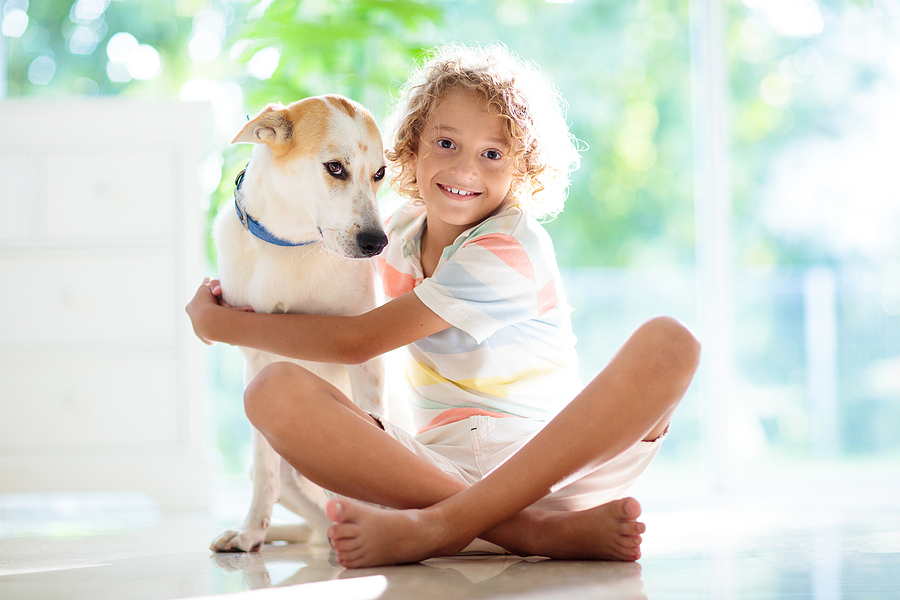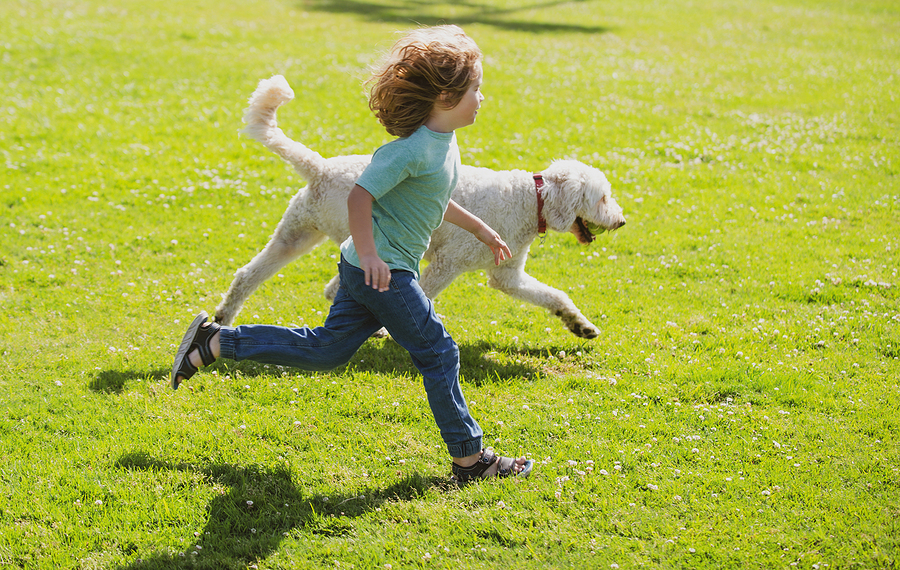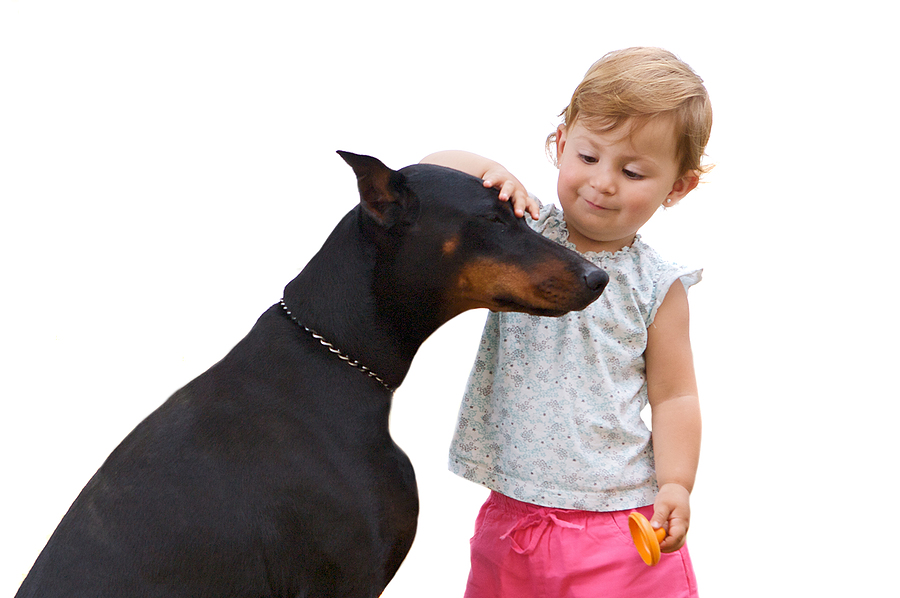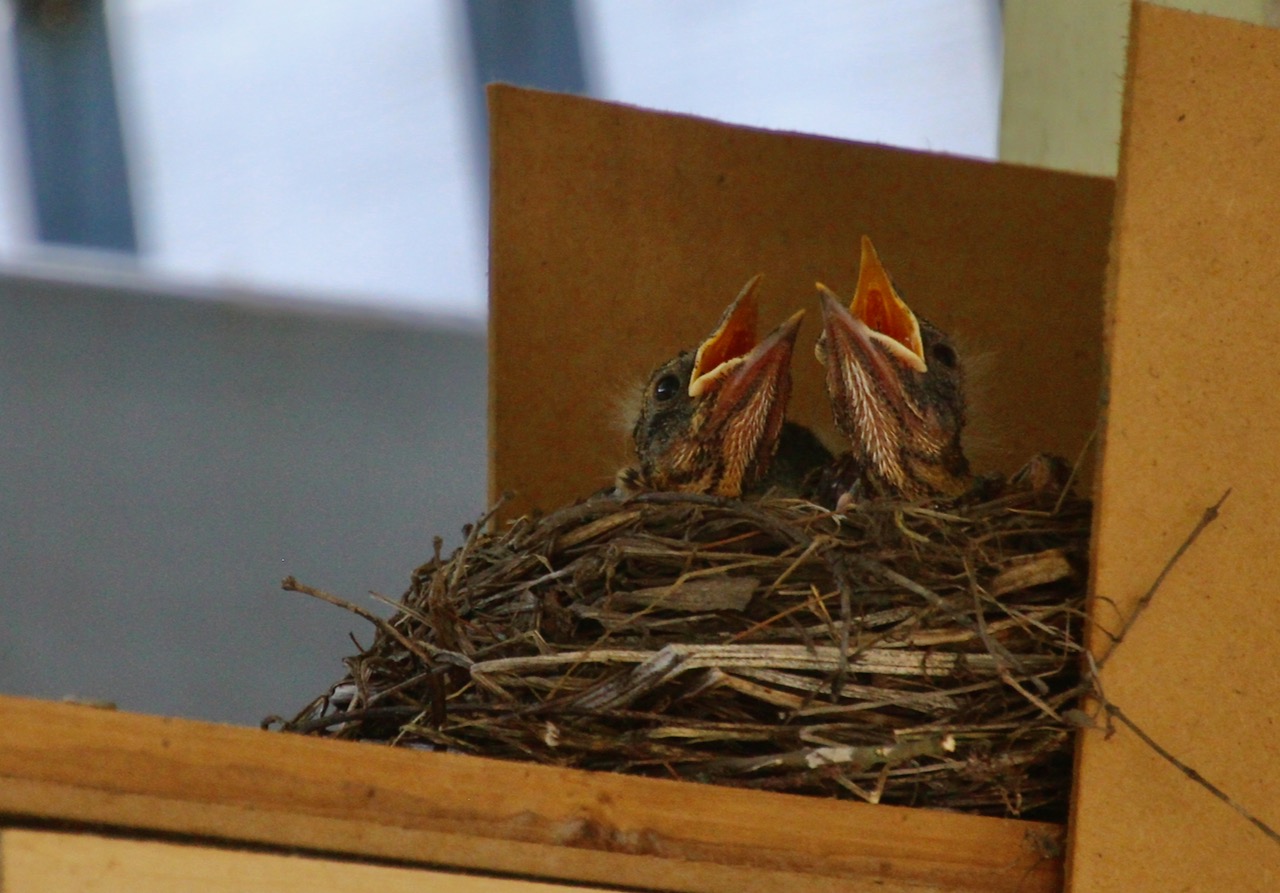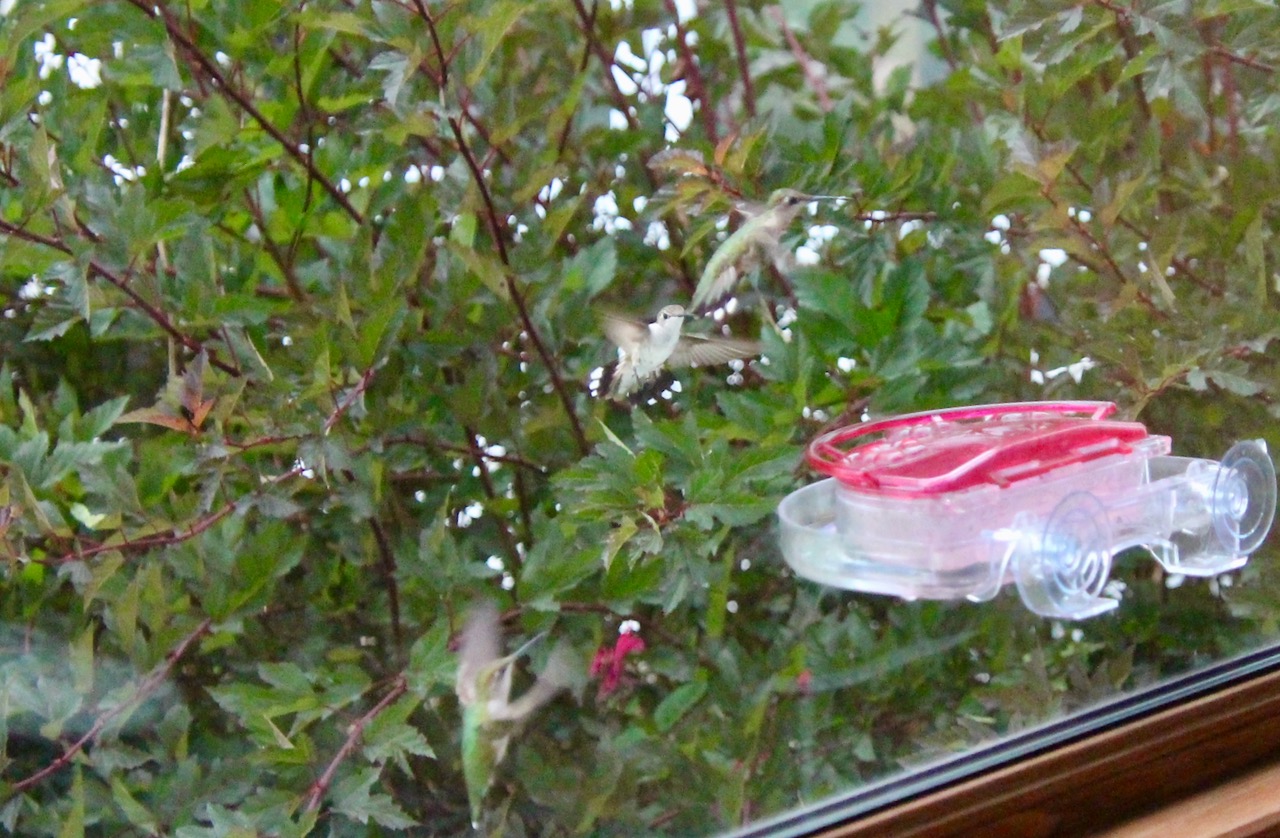Not long ago I asked readers to tell me what they’d like to talk about, and got a plethora of great ideas. One of them that hit home was the question of whether dogs could “be autistic.” (Best described as on ASD, or Autism Spectrum Disorder, which effects social communication, learning, and behavior.) I’ve met a few dogs that got me wondering myself, and it brings up so many issues that I thought it would be interesting for us to talk about.
Let me start with a story, if you’ll indulge me, not about ASD, but about ADHD (Attention Deficit Hyperactivity Disorder), because ADHD and ASD are neurodevelopmental disorders that often co-occur. Early in my career a couple brought in an Old English Sheepdog who was driving them mad. Boris, I’ll call him, couldn’t seem to contain himself in his own body. Sometimes he was attentive and learned his lessons in short order; other times he seemed to have forgotten everything, couldn’t stay still, and become so agitated he’d leap and bite at his owners, who were covered in nips and scratches. At first I thought it was just a dog with no frustration tolerance and not enough to do with his brain and his body. But by the second lesson something about him felt off. It felt like he simply couldn’t focus his brain much of the time. I began reading everything I could find about dogs described as “impossible” and “unable to concentrate.” I finally found a reference, written by a veterinary couple in Illinois, (whose names I can’t remember or find–anyone?) arguing that dogs could get ADHD and could be helped with Ritalin.
Wow. I called the couple’s vet, we had a long discussion, and everyone agreed that it was worth a try, as long as I was there to ensure that the effects didn’t make things worse. (As you no doubt know, stimulants like Ritalin can have an antithetical effect on people with ADD and/or ADHD.) In twenty minutes there was a different dog. His eyes were no longer glassy, he stopped flipping from barking at birds out the window to jumping on your legs, and he seemed, well, relaxed. For the first time. Wow.
I start with that story because of the relationship mentioned above; that both conditions are neurodevelopmental disorders that are often found together. If dogs can have attention deficit disorder, does that mean they can also be on the autism spectrum? We’re not the only ones asking: Recently, there has been a lot of interest in whether dogs can suffer from ADD/ADHD. Here’s from a 2021 paper in Translational Psychiatry:
“Our results indicated that high levels of hyperactivity/impulsivity and inattention were more common in dogs that are young, male and spend more time alone at home. Additionally, we showed several breed differences suggesting a substantial genetic basis for these traits. Furthermore, hyperactivity/impulsivity and inattention had strong comorbidities with compulsive behaviour, aggressiveness and fearfulness. Multiple of these associations have also been identified in humans, strengthening the role of the dog as an animal model for ADHD.”
You no doubt have noticed that the condition was most common in young, male dogs, who spent more time alone–which reminds me of an article in Whole Dog Journal that cautions readers to not label every dog who is super active as having ADHD. Dogs who truly have ADD/ADHD are exceptionally impulsive and simply can’t concentrate for any length of time on anything, even if it involves large pieces of chicken or liver.
You’ll also have noticed that I’ve spent a lot of time not talking about Austism, but if we’re going to ask if dog can have that condition, it’s a good place to start. Both conditions are neurodevelopmental, occur most often (or, at least, are diagnosed in them more often) in young males of highly social species (but are not limited to), and exist on a spectrum. So, one could argue that since the evidence is multiplying that dogs can have ADHD, it is at least reasonable to ask if they can be on the autism spectrum.
Even more compelling is the research out of Sweden, that found genetic markers in beagles related to genes that affect “social abilities” in humans with autism and aggression in adolescents with ADHD. Thus, the evidence is growing that dogs, as highly social mammals whose ability to communicate is critical to their function, may indeed be able to suffer from genetic conditions that impair their ability to function in a group, and a highly stimulating environment. But if they do, how would we diagnose it?
I actually started my research on this topic by talking to Anna Halverson, a friend and neighbor who has worked for years with children on the spectrum. I asked her what one would look for if they suspected a dog was on the spectrum. She started with a caution: “When you’ve met one person with autism, you’ve met one person with autism.” The symptoms vary so much that it can be hard to diagnosis in a human, much less another species. But given that, what symptoms would one look for in a dog? First, given that the primary symptoms relate to social communication, perhaps that’s where we should look. Children with ASD may start out smiling at others, but then change to avoid eye contact, stop responding to people talking to them, and struggle to engage in play with others. Perhaps the equivalent in dogs might be dogs who seem to have to little or no interest in social interactions, or, perhaps, only with one person or one other dog that they are comfortable with. It would be hard to predict when this would occur in dogs, given the huge difference in physical and social development between people and dogs, but it well might occur (just speculating) long before a puppy goes to a new home.
Anna reminded me that children on the spectrum DO want to make eye contact; it’s usually just too painful for them to do so because it is overwhelming. That’s the other symptom of ASD that we could look for in dogs; and the one that has triggered my interest with a few of my client’s dogs. Sensory overload is common in people on the spectrum, and I’ve met some dogs who simply couldn’t tolerate, for example, walking in the neighborhood, or even being petted in a quiet environment. The trick, of course, is to consider all the other, far more common, explanations: lack of socialization/environmental variability during critical periods, fear-based reactions due to past experiences, and/or lack of frustration control due to a number of factors. To name just a few.
The other symptom commonly seen in ASD is the existence of repetitive behaviors, believed to be self-soothing actions that help individuals cope with sensory overload. That is a behavior that could be easily seen in dogs, but that can have a myriad of causes, from licking paws because of pain or itching from allergies, obsessive tail chasing related to canine compulsive disorder, or anxiety about being left alone.
This is just a start to answering the question: Can dogs have ASD? The answer so far? Possibly. Probably? If so, would it be easy to diagnosis? Nope. If it does indeed exist (and, fyi, I’m guessing it does but is extremely rare), it would be good to know. Not just to use as a model for the condition in people (which seems to be the focus on most of the research), but, because dogs count too. And if they suffer from it, they deserve help and understanding.
What about you? Have you ever had or worked with a dog that you thought might be on the spectrum? Or, if you yourself have some version of ASD, is there anything your experience and wisdom could add to this conversation? I’m so curious what you all have to say . . . And, I want to add my thanks to Anna Halverson and several of my Certified Applied Animal Behavior colleagues who added so much to this conversation!
One last thing: It feels only right here to mention that I’m somewhere in the middle of the ADD one. I have all the classic symptoms of moderate ADD–difficulty organizing, staying on task, being forgetful. I don’t want to make this about me; I only add this because it’s important to emphasize that these “neurodiverse” conditions can sometimes make life more difficult, but still wonderful. I’ve done a few good things in my life, helped some people, some dogs, and written a few good books. I’m liking how my mystery is shaping up. And I can make the best strawberry/rhubarb pie you’ve ever had. So don’t think of these diagnosis as disasterous, or something to be ashamed of, they’re just part of the amazing range of potentials that come with these complicated brains we have, and the highly social world in which we live.
MEANWHILE, back on the farm: Holy moly, I had to put on a sweatshirt Friday & Saturday morning at a sheepdog trial! What a switch. (And a wonderful one at that.) Here’s the sunrise that accompanied the cool air on Friday:
There was a gorgeous “super moon” the night before; Jim and I went out to appreciate it and I tried taking a few snaps with the iPhone. I paid no attention to settings, just clicked away, and ended up with some shots better viewed in an art museum. But sort of fun, here’s one:
I’ll be waiting for the offers from museums . . .
Roberta and Robert have been devoted parents, stuffing worms and insects down their babies throats so vigorously you wonder that they don’t stab them to death.
There are actually three babies, and they are barely able to fit into the nest this morning. Last night I watched one of them flapping their wings like crazy; a clear sign that fledging is going to happen soon. I don’t want to miss watching their first flights, but it will happen fast so it’s doubtful I’ll manage to see it.
Wait! I just went to check, and one is gone already! Two left; one was flapping away but withdrew when I tried to get a photo. I don’t want to disturb them, so I’ll lay low.
In other bird news, the two other nests we’ve been following have failed (House Wren and Chipping Sparrow). The sparrow made a bad location choice–4 inches of rain on an unprotected nest, and the wren’s nest, I’m guessing was a victim of predation. A good reminder how difficult it is to raise babies successfully.
The Hummingbirds, on the other hand, appear to have had population explosion. I’d say it makes for fun feeder watching, but honestly, the continual fighting at the feeder–think Tom Cruise in Tom Gun on cocaine laced with steroids–is actually getting tiring. I have been known to spit out “There are three perches there! Just f’g share them!” There are a multitude of other places to feed here, so I’m not worried in the least about them getting food, and it’s amazing to watch their astounding in-flight abilities, but still. The cost-benefit analysis doesn’t add up.
Dogs, are you all interested in dogs? Sorry, I’ve spent so much time with the dogs lately but haven’t had a phone in my pocket and haven’t gotten many photos. Last weekend we were at the Cedar Stone Sheepdog Trial. I wish I could say that Skip and I did great, but alas, we did not. On his first run he couldn’t move the sheep, then he did fine on the second until the cross drive, when reverted to panicking and bringing back the sheep. I thought that was long over, sigh. The sheep were actually lovely to work. So, we did great at two trials and not well at all in two others. I have suspicions about what happened, but it’s a fact we have lots of work cut out for us.
We were back on Sunday to volunteer, which was great fun. I spent some time helping in the pens to get the sheep ready to be set out, and then both Maggie and Skip worked for several hours sometimes bringing sheep into the rest area when they were done with their run (mostly trivial, the sheep knew where to go and needed little encouragement), and more critically, holding sheep off that same area while the Novice dogs were running. Young dogs can be too enthusiastic and start running the sheep, who could end up smashing into a fence or closed gate. So our job was to protect the area to protect the sheep. It was a great exercise, because the dogs never knew if they were supposed to bring the sheep or drive them away; the task changed from minute to minute and they had to listen carefully to me to do it right. They did really well; I was happy for that anyway.
I didn’t get my own photos, but here’s a nice shot of Skip taken by friend Richard Kane at Nippersink:
Time for me to go pay the dogs some attention, who are a tad tuckered from yesterday’s hard work, but we all three need to get up and get moving. Please weigh in on the topic of the week–dogs and autism/ADD, I’m so curious what you have to say!
